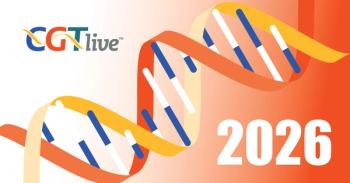
Tecartus Achieves High Response Rates Among Patients With R/R B-ALL in Real-World Data
Among 70 patients who were able to be evaluated for efficacy at 28 days or more, 91% achieved a complete response or a complete response with incomplete hematological recovery.
Kite’s brexucabtagene autoleucel (brexu-cel; Tecartus), a CD19-directed autologous chimeric antigen receptor T-cell (CAR-T) therapy, has demonstrated high response rates in patients with relapsed or refractory (r/r) B-cell precursor acute lymphoblastic leukemia (B-ALL) in data from a real-world study. The results were presented at
"...Brexu-cel
Among 70 patients treated across 13 centers included in the study who were able to be evaluated for efficacy at 28+ days, 64 patients (91%) achieved a complete response (CR) or CR with incomplete hematological recovery (CRi) and 6 patients had no response. Furthermore, 54 of the patients achieving CR/CRi had minimal residual disease-negative (MRD-) remissions. Six months following infusion 83% of patients with MRD- CRs and 35% of patients with MRD+ CRs continued to be in remission. It was also noted that at this time point, 89% of the 9 patients who received postCAR maintenance with tyrosine kinase inhibitor or POMP, 81% of the 11 patients who received postCAR allogeneic hematopoietic stem cell transplant (allo-HSCT), and 62% of the 38 patients who did not receive any subsequent postCAR therapy continued to be in remission. Roloff also pointed out that among a subset of 10 patients included in the efficacy analysis who had active central nervous system (CNS+) disease, 8 achieved CNS disease clearance following treatment with brexu-cel. He additionally stated that a few of the patients included in the study who were treated with brexu-cel were not evaluated for efficacy because their condition had clinically deteriorated by 28 days posttreatment.
In terms of safety, 62 of 75 patients (83%) evaluable for occurrence of cytokine release syndrome (CRS) experienced cases of CRS. In 57 patients, these cases were grade 1 to 2 and in 5 patients the cases were grade 3 to 4. Meanwhile, among all 76 patients included in the study at the data cutoff date who received brexu-cel, 46 patients (61%) experienced cases of immune effector cell-associated neurotoxicity syndrome (ICANS). In 17 patients these ICANS cases were grade 1 to 2 and in 29 patients the cases were grade 3 to 4.
The ages of the 76 treated patients ranged from 18 years to 81 years (median, 44). Among this group, 46% of the patients were female and 25% if the patients Hispanic. Roloff drew attention to the fact that 71% of the treated patients had Ph-negative biology and noted that the prior lines of therapy received by the patients ranged from 1 to 9 (median, 4). Fifty-three percent of the patients had previously been treated with blinatumomab, 37% were previously treated with inotuzumab, and 46% had previously received allo-HSCT. Roloff also pointed out that 69% of the patients had active disease at the time of apheresis, whereas 19% were in CR with MRD+ and 12% were in CR with MRD-. He stated that the median follow-up for survivors was 8.3 months.
"To conclude, this analysis uncovered high rates of CR with MRD negativity among patients who received brexu-cel as an FDA standard of care for r/r B-ALL," Roloff said. "We noted leukemic clearance in a majority of patients with CNS disease—especially CNS-3—and achieving MRD negativity appears to be important for maintaining a remission at 6 months post–brexu-cel, although this might be improved with maintenance therapy and consolidative transplant, but we'll need larger cohorts and more follow-up time to further adjudicate the effect of those strategies. We're actively trying to grow this effort. We've onboarded now close to 30 centers and as of this morning, we have data spanning 130 patients and close to a year of follow-up."
REFERENCE
1. Roloff G, Faramand R, Aldoss I, et al. Outcomes following brexucabtagene autoleucel administered as an FDA-approved therapy for adults with relapsed/refractory B-ALL. Presented at: the American Society of Clinical Oncology (ASCO) 2023 Annual Meeting, held June 2-6, in Chicago, Illinois. Abstract #7001
Newsletter
Stay at the forefront of cutting-edge science with CGT—your direct line to expert insights, breakthrough data, and real-time coverage of the latest advancements in cell and gene therapy.






























